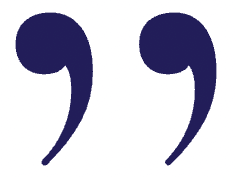EMDR Therapy
in Belfast,
Counselling for Anxiety, Stress, Depression, Self-esteem, Trauma, Grief and Loss, Work Stress, Couples and Relationships and more.

Providing Services
over 30+ Years
Introduction
EMDR (Eye Movement Desensitisation Reprocessing)
Eye Movement Desensitisation Reprocessing ( EMDR) involves processing distressing memories from traumatic memories, lessening emotional charge and so allowing you to move on from these memories.
EMDR is recognised by the National Institute for Health and Clinical Excellence( NICE)and the world Health Organisation as a treatment for processing traumatic memories and post traumatic-stress disorder( PTSD).
At first glance, Eye Movement Desensitisation Reprocessing ( EMDR) appears to approach psychological issues in an unusual way. EMDR is not a talking therapy in its own right; it uses the body's natural memory processing functions to help clients work through difficult or traumatic memories.
- Postgraduate Diploma in the Psychodynamics
- Certificate in Hakomi Body Centred Psychotherapy
- EMDR Level 1 and 2
- Registered Member of the British (BACP)
- I work to BACP’s code of ethics for good practice
- I hold a M.Sc in Guidance and Counselling (University of Ulster)
Key Information
EMDR Therapy for Trauma and Emotional Healing
The human mind uses Rapid Eye Movement ( REM) during sleep to help it process everyday emotional experiences, bringing us relief from any distress. However, when we experience an adverse or traumatic life event, whether this is in our early or later life, this process breaks down and REM sleep doesn't bring the usual relief. Those memories can then start to feel stuck, often being triggered when we do not want to think about them, with an intense level of distress, often impacting our behaviours in an undesired way. In EMDR sessions we process distressing emotions and images from memories by replicating REM in the session whilst holding the image in your mind's eye, reducing the power of emotionally charged memories.
EMDR addresses the past, present and future. The goal is to allow the person to acheive a complete state of emotional health. After an EMDR session, there may be a strong sense of relief, a feeling of openness. It is important that before we do the Eye Movement technique of EMDR to carry out an assessment and to ensure that you are resorces and stable enough to do the processing and it can therefore take some time before we decide to move forward with the eye movement. How effective is EMDR.
EMDR is recognised by the National Institute for Health and Clinical Excellence( NICE)and the world Health Organisation as a treatment for processing traumatic memories and post traumatic-stress disorder( PTSD).
- Postgraduate Diploma in the Psychodynamics
- Certificate in Hakomi Body Centred Psychotherapy
- EMDR Level 1 and 2
- Registered Member of the British (BACP)
- I work to BACP’s code of ethics for good practice
- I hold a M.Sc in Guidance and Counselling (University of Ulster)
EMDR Therapy can help with
EMDR (Eye Movement Desensitization and Reprocessing) therapy is an effective approach for processing distressing memories and trauma. By using guided eye movements or other forms of bilateral stimulation, EMDR helps to reprocess traumatic events, reducing their emotional charge and helping the individual move forward. EMDR allows individuals to reframe past events, break free from the effects of trauma, and heal deeply rooted emotional wounds. It is widely used for a range of emotional and psychological struggles, offering relief and long-term recovery. Here are some of the ways EMDR therapy can help:
-
Trauma and PTSD
EMDR is widely recognized as a powerful treatment for trauma and PTSD, helping individuals process traumatic memories and reduce the emotional distress linked to past events.
-
Anxiety and Panic Attacks
EMDR can help reduce anxiety symptoms by addressing the root causes of stress and emotional triggers, allowing individuals to feel calmer and regain control of their lives.
-
Phobias and Specific Fears
EMDR therapy works to desensitize irrational fears or phobias, helping individuals overcome their intense emotional reactions to things like flying, heights, or certain animals.
The Process
Healing from Trauma and PTSD
EMDR is especially beneficial for individuals dealing with the aftermath of trauma or post-traumatic stress disorder (PTSD). By targeting the traumatic memories and reducing their emotional charge, EMDR helps individuals process these experiences and shift their perspectives. This reprocessing enables those affected by trauma to release intense emotions, ultimately leading to greater emotional regulation and freedom from the persistent effects of PTSD. With EMDR, individuals are able to face traumatic memories and reframe them, leading to healing and a more empowered sense of self.
Managing Anxiety and Reducing Panic
For individuals suffering from anxiety or panic attacks, EMDR provides a comprehensive approach to address the underlying emotional triggers and past experiences that contribute to excessive worry and fear. By working through the origins of anxiety, whether they stem from past traumatic events or ongoing stressors, EMDR helps break the cycle of panic and distress. The therapy encourages individuals to process negative emotions and develop healthier coping mechanisms, resulting in a reduced sense of overwhelming fear and anxiety. Over time, patients may experience greater emotional stability, resilience, and an increased sense of control.
Overcoming Phobias and Fear Responses
EMDR has been proven to be highly effective for treating phobias and specific fears. By identifying the root causes of these fears and reprocessing them through bilateral stimulation, EMDR reduces the intensity of the fear response. Whether it’s a fear of flying, heights, animals, or public speaking, EMDR helps individuals desensitize their emotional reaction and develop a more grounded response to the feared object or situation. The therapy works by shifting negative associations and helping individuals gain confidence in facing the situations they once avoided, leading to lasting relief from phobias and fears.
Every journey starts with a first step, make yours today.
Would you like to explore your mental health wellbeing? Reach out today to start your journey towards healing and personal growth with a compassionate, professional counsellor by your side.
Other Services
Other areas of Counselling,
see how I can help
Counselling offers support for a wide range of challenges, providing a safe space to explore your thoughts and feelings. Whether you’re dealing with anxiety, depression, or trauma, therapy helps you understand your experiences and work towards positive change.
It can also address issues like workplace stress, relationship challenges, or personal growth. Whatever you’re facing, counselling provides tools and guidance to build resilience and move forward with clarity and confidence.
- Workplace Anxiety
- Childhood Trauma
- Depression
- Social Anxiety
- Relationship Breakdown
- Grief Support
- Self-Esteem Struggles
- Nature-Based Therapy
- EMDR for Healing
- Body Image & Eating
Every journey starts with a first step, make yours today.
I offer flexible counselling options, including both in-person and remote sessions, allowing you to choose the format that best fits your lifestyle and comfort level.
In-person Sessions
In-person counselling provides a unique opportunity for connection and support in a comfortable environment. Meeting face-to-face allows for deeper emotional exchange and fosters a strong therapeutic relationship. Together, we’ll create a safe space to explore your challenges and work towards healing in a supportive atmosphere.
Remote Options
Remote counselling allows you to connect from home via phone or the video platform Zoom. This flexible option makes it easy to fit sessions into your schedule while ensuring meaningful therapeutic conversations in a convenient setting.


Client reviews
-
Depression
"I lost my relationship and my job and was at an all time low, I had gone to see many counsellors, many of whom didn’t help me. Jean did. She was real with me, she listened, she recognised my pain, I felt she was with me in my pain and wasn’t scared of it. Quite simply I wouldn’t have turned my life around without her. She was only one I could trust and who gave me the care and support I needed."
J, 54
-
Depression
"I was scared going to my first counselling session but Jean was warm, welcoming and professional. She put me at ease and I was able to say things to her that I had never told anyone before. I was able to understand my behaviour and my pain so much more and to gradually change my life. I was able to put old ghosts to rest and enjoy my life again."
B, 39
-
Anxiety
"Going to counselling was so helpful. I was really anxious, couldn’t concentrate, couldn’t settle, was wakening up every night and felt so vulnerable. I felt I had lost everything and didn’t know where to turn. Through being listened to and heard, I came to understand some of why I was behaving the way I was and through Jean’s gentle probing I was able to look at my attitudes and behaviour and see how it was making things worse. I am so grateful that I had the courage to pick up the phone and make an appointment. Money well spent."
A, 41
-
Anxiety
"I have had many problems through out my life and seeing Jean has been a lifesaver for me. I never thought I could change my life around in the way I have. Counselling was painful at times, looking at things that had happened in the past, but Jean supported me and was my ally during this process. She allowed me to express my painful emotions, give me hope that I could survive and I did."
L, 60
-
Body Centred Psychotherapy
"Jean really helped me to feel my emotions, I had cut off from my body and was living in my head. I was just like an automaton, going through the emotions. My relationship had broken down and I was devastated. Jean sat with me and gradually I was able to come into my body and to feel again and eventually connect with friends again and not feel so alone or separate. Jean allowed me to feel safe enough to feel some of my emotions and to feel my fears. I never felt judged, I felt heard and valued and gradually came to believe again that it was safe enough for me to speak what I was feeling and that I could survive what I had experienced. "
K, 53
-
Couple Counselling
"I feel excellent progress has been made in our relationship and wish I had considered the counselling earlier. Although difficult and painful at times, having a neutral and honest assessment of our needs was extremely beneficial "
J, 33
-
Couple Counselling
"Jean is such a good counsellor, she gives an excellent service. We had just got civil partnered and thought it would be the happiest days of our lives, but we were struggling in our relationship. Though counselling we learned how to sort out our differences without hurting each other and we have grown closer together. We would go and see Jean if the need arises but we are able to talk things out now and realise how we wind up each other. We are now practicing how to put what we have learned into practice. Thank you"
M, 36 and D, 38
-
Couple Counselling
"My husband and I still loved each other but couldn’t find a way through. We had stopped communicating with each other and were living separate lives and were pretty much done. For the sake of the children we thought we would go and see a counsellor. We went to see Jean and it really helped us, we got to understand at a deeper level what the problems were, how we had stopped supporting each other and most importantly how to fix. We are still married and the children are thriving."
E, 39 and W, 43
-
Food and Body Image
"I hated my body and went to see Jean to lose weight. I got so much more than that. I was surprised at what I found out. I got to understand why I was eating and how food was an emotional crutch for me and how it was easier to hate my body and myself, rather than deal with some of the hateful and horrible things that had happened to me in my life."
C, 44
-
Food and Body Image
"My life looked perfect on the outside but had crumbled on the inside. I was feeling desperate and just couldn’t cope any more. I was binge eating and hating myself. It was a long and tough journey but with Jean’s knowledge, skills and understanding I have stopped striving for the perfect life and the perfect me. Instead I have opened up to friends and family and am much happier."
S, 34
-
Nature
"Jean has a real gift to connect with people and to understand them. I had tried talking to other therapists and it hadn’t helped. When I spoke to Jean she understood this and suggested that we see each other outside and and be in nature. I found this so healing and less intimidating. It allowed me to feel my breath, to feel my legs, to feel the earth beneath me, I felt less alone. Jean and nature helped soothe me and allowed me to heal"
T, 53

Jean McMinn Therapy
Counselling & Psychotherapy in Belfast Holywood - Counselling for Anxiety, Stress, Depression, Self-esteem, Trauma, Grief and Loss, Work Stress, Couples and Relationship and more.
Bangor - Cultra - Newtownards - Carrickfergus - Belfast City Centre - Donaghadee - Lisburn - Dundonald - Groomsport - Larne - Cookstown - Omagh - Gortin - Carrickmore - Pomeroy in Co Tyrone - Derry - Monaghan - Holywood - Comber


